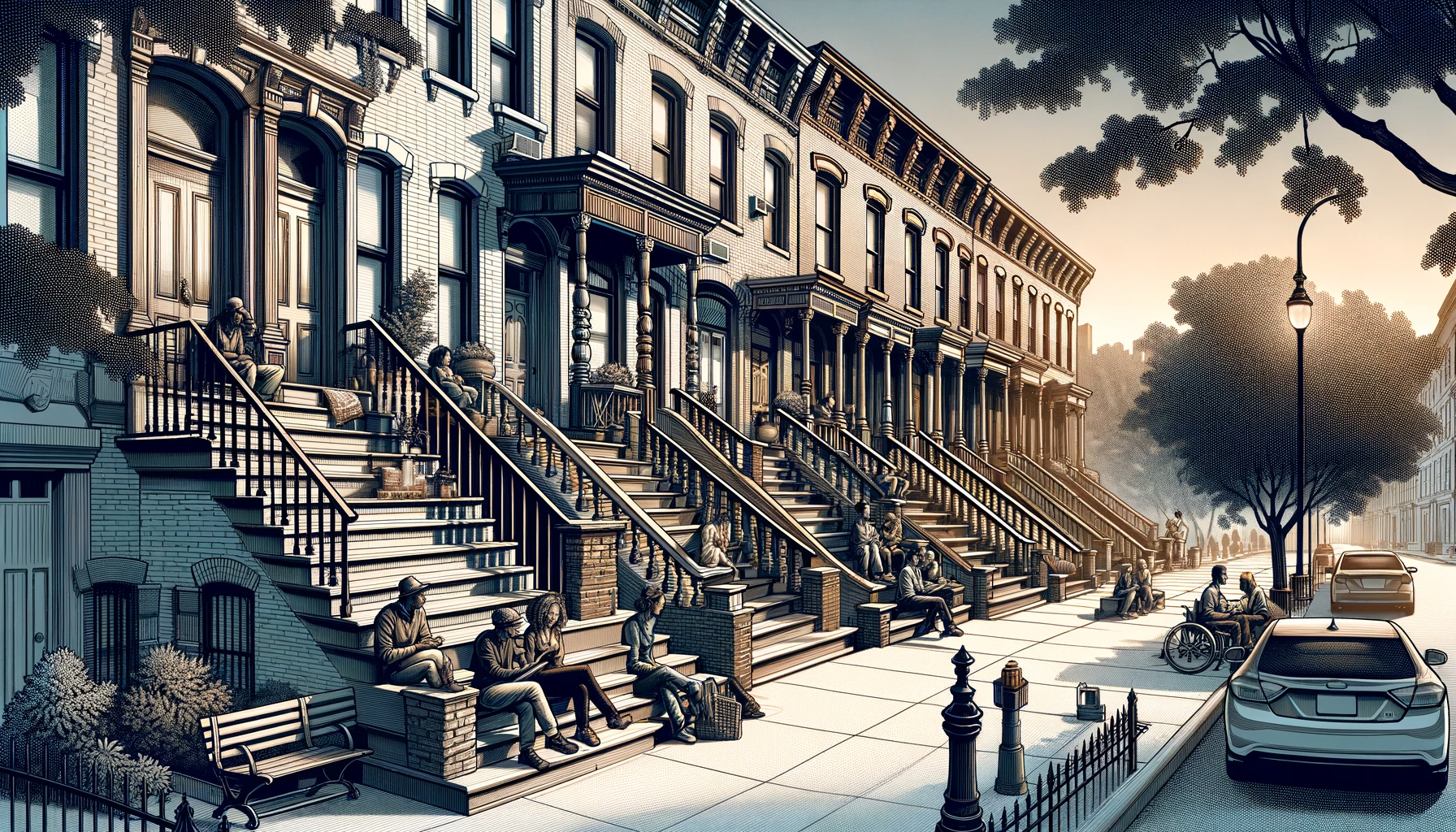
Introduction
In the urban landscape of the United States, stoops – the small staircases leading up to the entrance of buildings, particularly in cities like New York – are more than just architectural features. They are cultural icons, social hubs, and historical landmarks. This post delves into the significance of stoops in the American urban milieu and their role as more than just architectural elements.
Historical Roots
The origin of stoops dates back to the Dutch settlers in the 17th century. Derived from the Dutch word ‘stoep’ (meaning step), they were initially built for practical purposes, such as keeping homes above street level to avoid flooding and mud. Over time, stoops evolved into social spaces.
Social Significance
Stoops have long served as communal gathering spots. In the days before air conditioning, people would sit on their stoops to escape the heat of their homes and engage with neighbors. This tradition continues in many urban neighborhoods, where stoops act as stages for everyday social interactions and community bonding.
Architectural Appeal
Stoops add a unique aesthetic to city streetscapes, especially in historic neighborhoods. They are often seen in brownstone and townhouse designs, with variations in style from classic to contemporary. The architectural appeal of stoops contributes significantly to the character and charm of American urban neighborhoods.
Cultural Representation
Stoops have been immortalized in popular culture – from movies and TV shows to literature and photography. They symbolize the urban lifestyle and have become visual shorthand for certain aspects of American city life, particularly in New York City.
Preservation and Challenges
As important as they are, stoops face challenges. Urban redevelopment and modernization efforts sometimes overlook their cultural value. Preservationists advocate for maintaining stoops not just as architectural elements, but as integral parts of the community fabric.
Conclusion
Stoops in the USA are more than just steps leading to a building’s entrance; they are vital components of urban culture and architecture. They tell stories of communities, social interactions, and historical evolution, making them invaluable to the American urban landscape.
